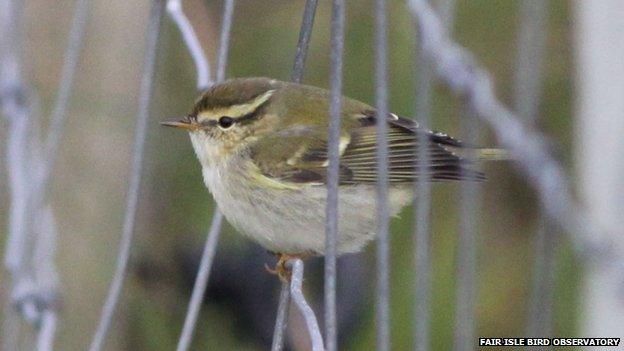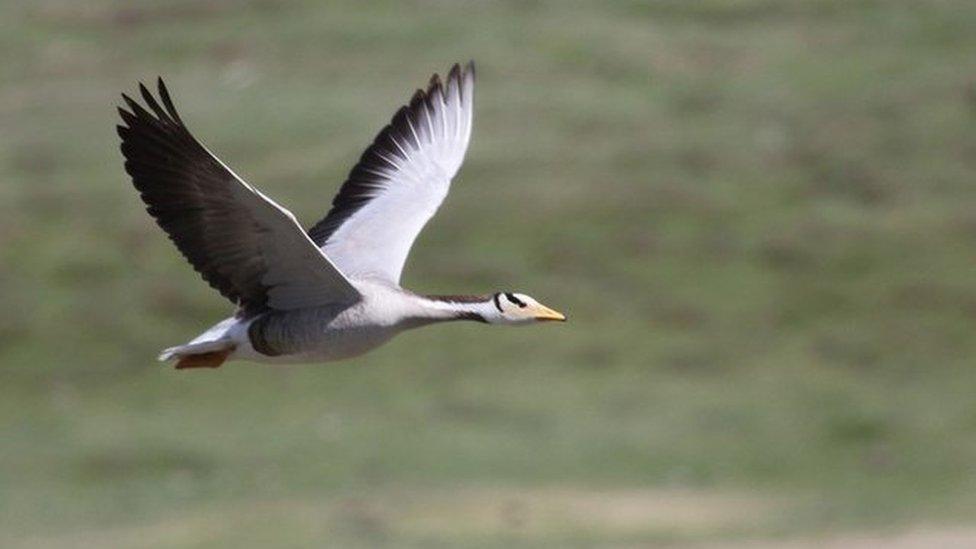Bird migration changes on Fair Isle revealed
- Published

The Fair Isle bird observatory, pictured in the background, has recorded the migration patterns of birds.
A major survey into bird migration from Africa over the past 60 years has revealed substantial changes in behaviour.
The Fair Isle bird observatory has recorded bird migration at its station between Shetland and Orkney since 1938.
A new initiative - the Fair Isle migration project - has now analysed records from the sanctuary since 1955.
The study has also revealed changes to the times of the year the birds are migrating.
The research has concluded spring migration has happened much earlier in recent years for many species, such as the swallow, which is arriving up to three weeks earlier than the birds did in the 1950s.
For other species, such as the willow warbler, spring migration has occurred much later.
Dr Will Miles, of the Fair Isle migration project, will present some of his initial research from the sanctuary at RSPB Scotland's Big Nature Festival in Musselburgh at the weekend.
The Migration Project is a scientific collaboration between the Fair Isle Bird Observatory Trust and the University of Aberdeen.

The yellow-browed warbler is one of the types of birds monitored by the station
Dr Miles said: "The natural world is changing, including the timing and numbers of birds on migration and a crucial challenge facing scientists is to identify and understand these changes and their causes.
"It's too early to say for sure why some birds are arriving so much earlier on Fair Isle, while others seem to be delaying their arrival.
"Possible causes include changing climate and weather patterns, also changes in the summer breeding range and population size of many species across Europe."
Fair Isle is Britain's most remote inhabited island, lying between Shetland and Orkney. It has recorded more first sightings of rare birds than any other place in Britain.
It is an internationally renowned hotspot for bird migration and for over 60 years the Fair Isle bird observatory has made daily census counts of migrant birds.
The written records from 1955 onwards were digitised two years ago, and the Fair Isle migration project is a study of that data.
As well as changes in migration patterns, the research has concluded the number of scarce migrant birds arriving in Scotland from Eastern Europe and Siberia in the autumn has risen sharply over the last 60 years and is continuing to do so.
Birds such as the yellow-browed warbler and the barred warbler have also increased in number.
- Published15 January 2015

- Published28 April 2015
